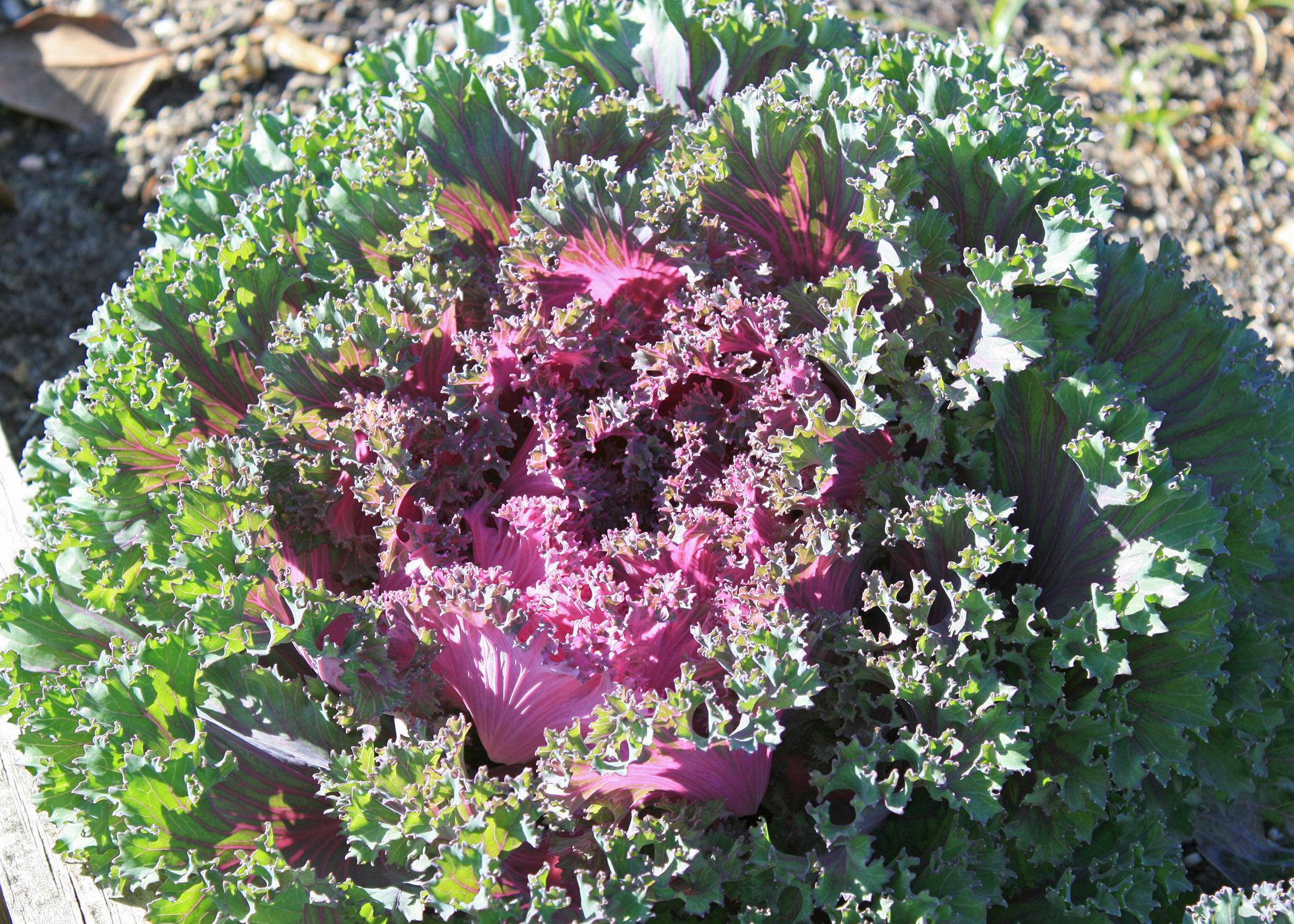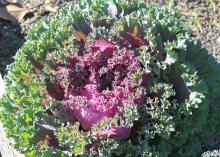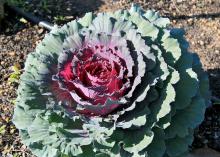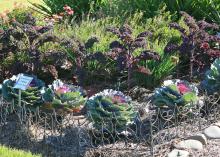Information Possibly Outdated
The information presented on this page was originally released on November 18, 2013. It may not be outdated, but please search our site for more current information. If you plan to quote or reference this information in a publication, please check with the Extension specialist or author before proceeding.
Ornamental cabbage and kale add garden pizzazz
It’s not too late to plant your winter color, but when you go to the garden center, resist the temptation to head straight for the pansies and violas. Consider putting some colorful ornamental kale and cabbage in your landscape this winter.
These ornamentals bring so many different colors and leaf textures to add landscape interest. Don’t plant a single type. Mix and match your favorites to create a display all your own.
If you like red-colored selections as much as I do, Redbor kale is an outstanding choice. The frilly leaf color is a solid purple-red that intensifies as the temperature drops in the winter. This characteristic is actually true of all ornamental kale and cabbage.
Redbor is also a long-lived plant. Though marketed for the cool winter months, I’ve seen this plant still looking good in July and August in south Mississippi.
Ornamental kale and cabbage are mostly green when first transplanted, and they begin to display colorful centers as colder weather sets in. An interesting fact is that ornamental kale and cabbage are the same species, Brassica oleracea. Ornamental cabbage usually refers to selections that have smooth and basically unruffled leaves. Kale leaves are ruffled or textured, and many have feathered leaf edges.
Red Chidori kale forms extremely colorful, loose heads. New foliage in the center is a bright magenta red. In the early-evening light, the colorful centers look like a hearth of glowing embers. As the leaves mature, they take on a darker green, but veins maintain the magenta color.
Ornamental cabbage looks more uniform than does kale. Pigeon Purple cabbage form round, semisolid heads. The outer leaves are a darker green with purplish veins. As the season progresses, new center leaves emerge with a purplish-red color. The Pigeon series also has white and pink selections.
Many gardeners might not realize that ornamental kale and cabbage are edible.
Try adding their bright colors to bring pizazz to any fresh salad or stir-fry. My family absolutely loves kale chips. You have to cut regular kale leaves into bite-sized pieces, but the ornamental selections are already chip size. Toss with olive oil and sprinkle with sea salt. Spread them out on a cookie sheet and bake at 250 degrees until crispy. This usually takes about 30 to 35 minutes.
The way ornamental kale and cabbage are planted is important for optimum success. Always place the transplants in the ground up to their lower leaves. Although they can look good as single specimens, I like to mass these plants in the landscape for a more dramatic display.
The plants need good soil drainage because they are susceptible to root rot problems. Add composted organic matter at planting to increase soil drainage, but don’t let the soil dry out. Cold fronts moving through can be relatively dry. Under these conditions, the soil moisture can be depleted rapidly. Since kale and cabbage like consistent soil moisture, apply a layer of the mulch to help conserve soil moisture.
I like to add a tablespoon of 14-14-14 slow-release fertilizer into each planting hole to get the plants off to a great start. Feed every four weeks with water-soluble 20-10-20 or 20-20-20 fertilizer to keep the plant healthy and growing strong.
Ornamental kale and cabbage are susceptible to cabbage loopers. These are easy to control with the biological pesticide Bacillus thuringiensis or products containing the active ingredient spinosad.










